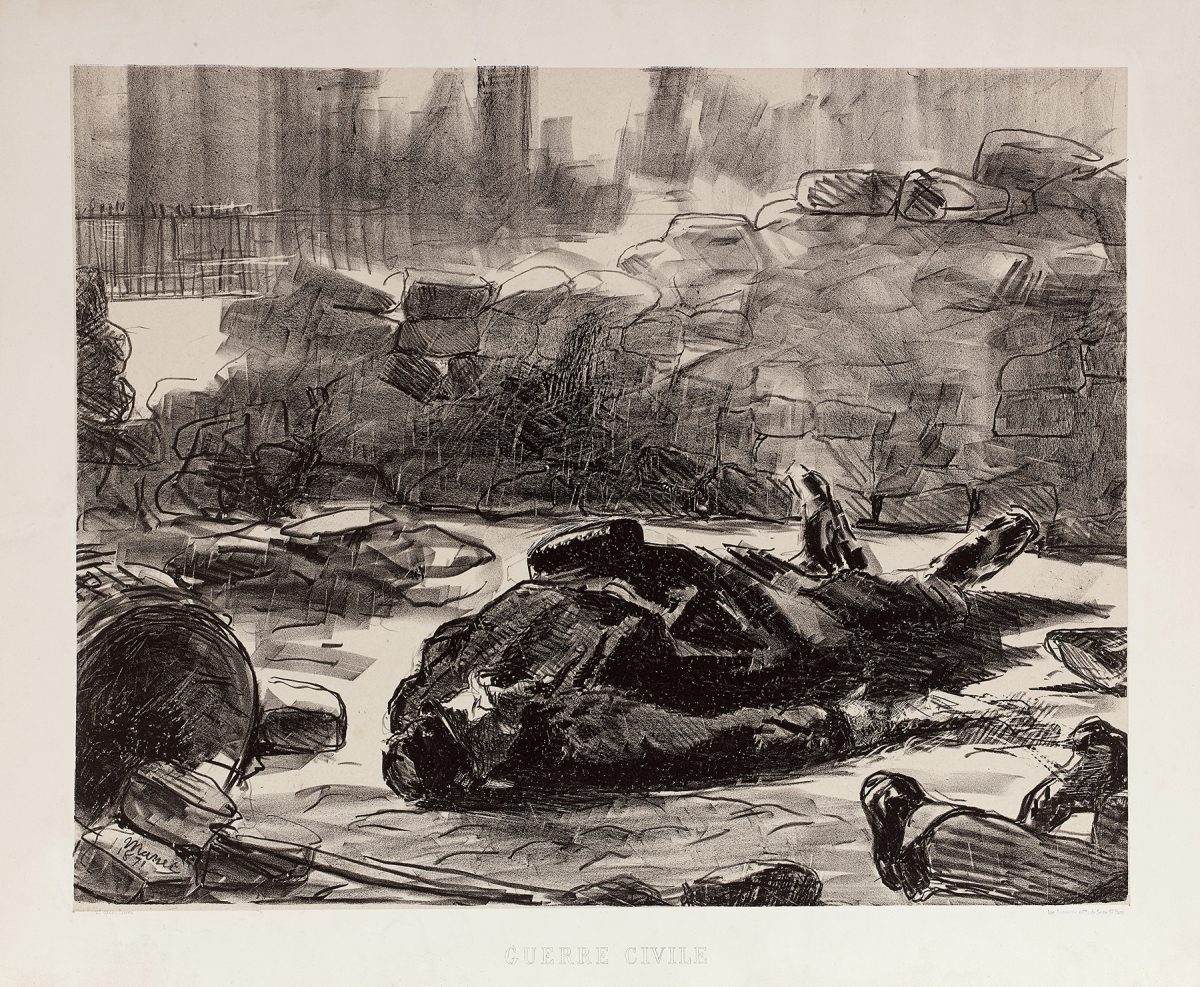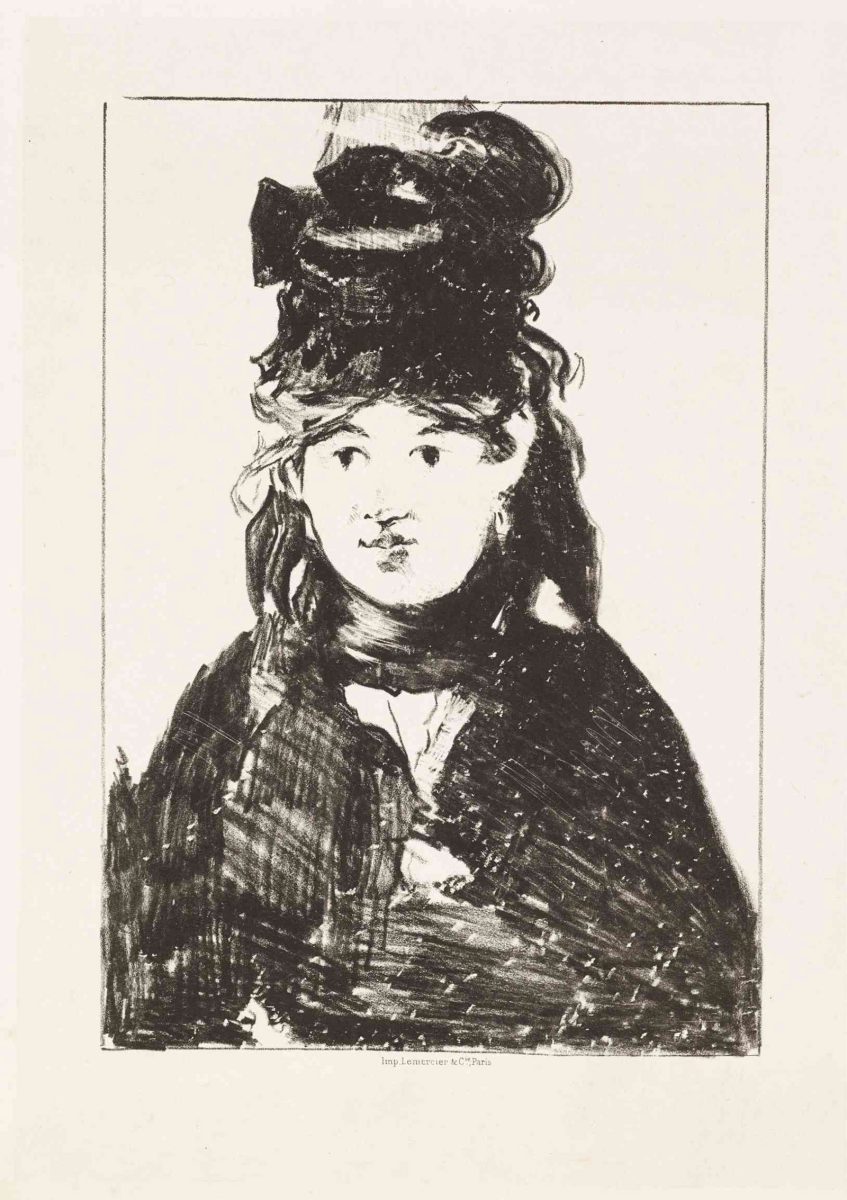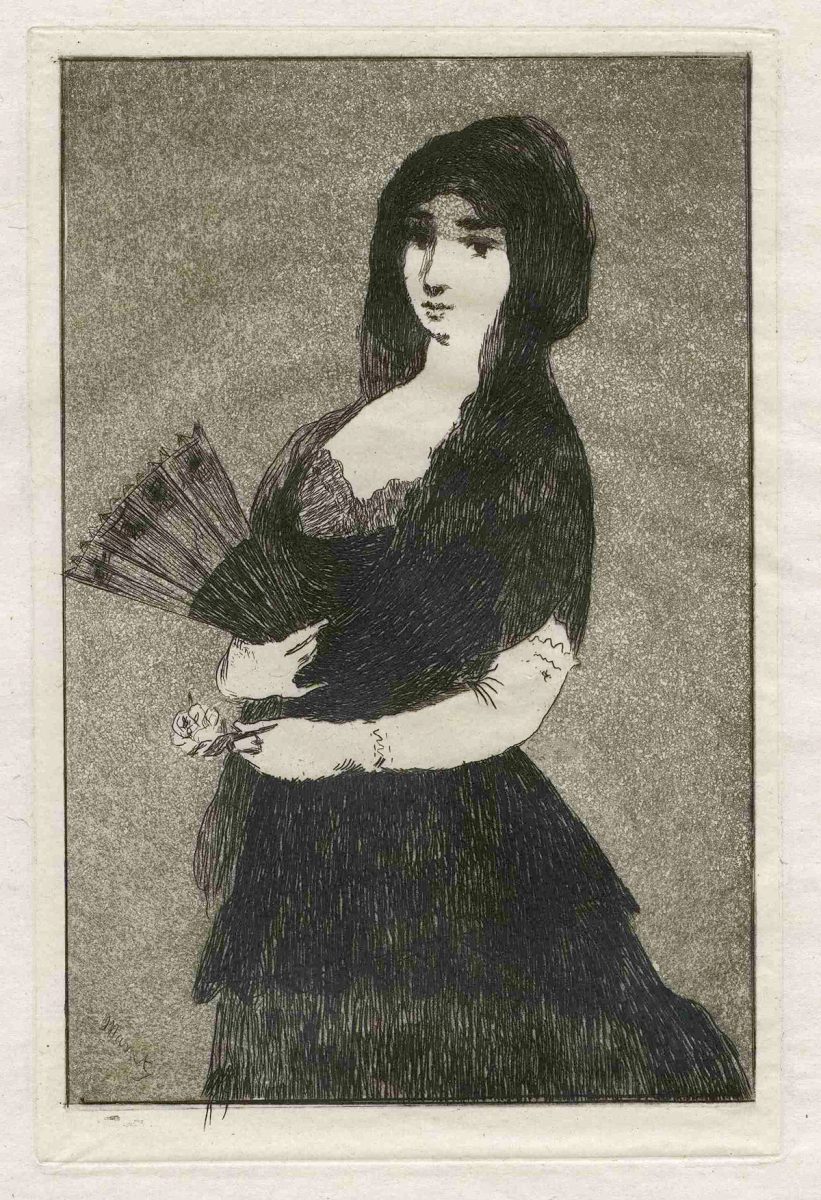The Fondation’s holdings of prints by Édouard Manet are an important part of its effort to build a collection that coherently illustrates artists’ renewed interest in printmaking in the second half of the 19th century. Over the last few years, this collection has been expanded to include prints by such undisputed masters as Degas, Bresdin, Géricault, Redon and Pissarro. Today, the collection also includes four prints by Édouard Manet. Two of these, Fleur exotique and Berthe Morisot, en noir, come from the estate of Gérard de Palézieux, while the other two, Toréro mort and Guerre civile, were acquired more recently.
Édouard Manet occupies a key place in the history of art. His work marked a radical break withnineteenth century academicism, paving the way for Impressionism and the modernist painters that would follow. Born in Paris to a respectable bourgeois family, the young Édouard aspired to a conventional career in the navy. It was only after failing the entrance exam for the Naval Academy that he turned to painting, joining the studio of history painter Thomas Couture in 1849. But Manet's real apprenticeship came in the form of his contact with the great masters -Tintoretto, Titian, Hals, Velázquez- that he copied tirelessly in the Louvre. Having been admitted to the 1861 Salon with his Chanteur espagnol, Manet shocked Paris in 1863 with Le Déjeuner sur l'herbe, a seminal work that broke the prevailing codes surrounding nudity and was refused entry to the Salon. Nevertheless, the work was a succès de scandale, something he repeated two years later with his Olympia, a bold nude that brought Manet great fame. The French artist became influential among the young painters who would soon form the Impressionist group, yet Manet remained apart from that movement, instead choosing to follow a personal path that would lead him to his last masterpiece, Un Bar aux Folies Bergère (1882), which he painted a year before his death.
Although he was first and foremost a painter, Manet made more than one hundred prints over the course of his career, producing almost half of them between 1860 and 1863. A founding member of the Société des Aquafortistes (set up in 1862), the artist contributed actively to the revival of etching, publishing two portfolios of his compositions. From 1868 to 1874, he turned to lithography, producing a number of masterpieces in that medium, including his Guerre civile (1871), which was inspired by the events of the Commune, and Berthe Morisot, en noir (1872), his portrait of the renowned painter (who was also his sister-in-law). Manet also used etching to illustrate poems, such as Armand Renaud’s Fleur exotique, Edgar Allan Poe’s Le Corbeau, and Stéphane Mallarmé’s L'Après-midi d'un faune. Alongside his original engravings, Manet also transposed some of his own paintings onto copper, such as Toréro mort (1867).



